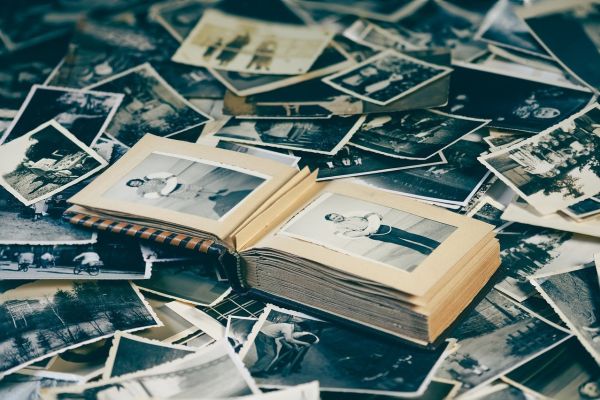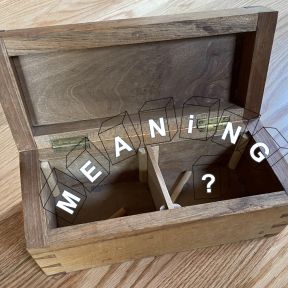How Memory Works
Memory is a continually unfolding process. Initial details of an experience take shape in memory; the brain’s representation of that information then changes over time. With subsequent reactivations, the memory grows stronger or fainter and takes on different characteristics. Memories reflect real-world experience, but with varying levels of fidelity to that original experience.
The degree to which the memories we form are accurate or easily recalled depends on a variety of factors, from the psychological conditions in which information is first translated into memory to the manner in which we seek—or are unwittingly prompted—to conjure details from the past.
On This Page
The creation of a memory requires a conversion of a select amount of the information one perceives into more permanent form. A subset of that memory will be secured in long-term storage, accessible for future use. Many factors during and after the creation of a memory influence what (and how much) gets preserved.
Memory serves many purposes, from allowing us to revisit and learn from past experiences to storing knowledge about the world and how things work. More broadly, a major function of memory in humans and other animals is to help ensure that our behavior fits the present situation and that we can adjust it based on experience.
Encoding is the first stage of memory. It is the process by which the details of a person’s experience are converted into a form that can be stored in the brain. People are more likely to encode details of what they are paying attention to and details that are personally significant.
Retention, or storage, is the stage in which information is preserved in memory following its initial encoding. These stored memories are incomplete: Some of the information that is encoded during an experience fades during retention, sometimes quickly, while other details remain. A related term, memory consolidation, refers to the neurobiological process of long-term memory formation.
Sleep facilitates the retention of memories, though why exactly this is the case is not fully understood. Research has found that people tend to show better memory performance if they sleep after a phase of studying rather than staying awake. Researchers have proposed that sleep supports memory consolidation in the brain, though other explanations include that sleep aids retention by eliminating interference from memories that would be formed while awake.
While memories are usually described in terms of mental concepts, such as single packages of personal experience or specific facts, they are ultimately reducible to the workings and characteristics of the ever-firing cells of the brain. Scientists have narrowed down regions of the brain that are key to memory and developed an increasingly detailed understanding of the material form of these mental phenomena.
The hippocampus and other parts of the medial temporal lobe are critical for many forms of memory, though various other parts of the brain play roles as well. These include areas of the more recently evolved cerebral cortex, the outermost layer of the brain, as well as deep-seated structures such as the basal ganglia. The amygdala is important for memory as well, including the integration of emotional responses into memory. The extent to which different brain regions are involved in memory depends on the type of memory.
Memory involves changes to the brain’s neural networks. Neurons in the brain are connected by synapses, which are bound together by chemical messengers (neurotransmitters) to form larger networks. Memory storage is thought to involve changes in the strength of these connections in the areas of the brain that have been linked to memory.
A memory engram, or memory trace, is a term for the set of changes in the brain on which a memory is based. These are thought to include changes at the level of the synapses that connect brain cells. Research suggests an engram is not located in one specific location in the brain, but in multiple, interconnected locations. Engram cells are groups of cells that support a memory: They are activated and altered during learning and reactivated during remembering.
After memories are stored in the brain, they must be retrieved in order to be useful. While we may or may not be consciously aware that information is being summoned from storage at any given moment, this stage of memory is constantly unfolding—and the very act of remembering changes how memories are subsequently filed away.
Retrieval is the stage of memory in which the information saved in memory is recalled, whether consciously or unconsciously. It follows the stages of encoding and storage. Retrieval includes both intentional remembering, as when one thinks back to a previous experience or tries to put a name to a face, and more passive recall, as when the meanings of well-known words or the notes of a song come effortlessly to mind.
A retrieval cue is a stimulus that initiates remembering. Retrieval cues can be external, such as an image, text, a scent, or some other stimulus that relates to the memory. They can also be internal, such as a thought or sensation that is relevant to the memory. Cues can be encountered inadvertently or deliberately sought in the process of deliberately trying to remember something.
Multiple factors influence why we remember what we do. Emotionally charged memories tend to be relatively easy to recall. So is information that has been retrieved from memory many times, through studying, carrying out a routine, or some other form of repetition. And the “encoding specificity principle” holds that one is more likely to recall a memory when there is greater similarity between a retrieval cue (such as an image or sound in the present) and the conditions in which the memory was initially formed.
After a memory is retrieved, it is thought to undergo a process called reconsolidation, during which its representation in the brain can change based on input at the time of remembering. This capacity for memories to be reformed after retrieval has been explored as a potential element of psychotherapeutic interventions (for dampening the intensity of threatening memories, for example).
“Flashbulb memories” are what psychologists have called memories of one’s personal experience of significant and emotionally intense events, such as the 9/11 attacks and other highly distinctive occurrences. These memories may seem especially vivid and reliable even if the accuracy of the remembered details diminishes over time.
Priming is what happens when being exposed to one stimulus (such as a word) affects how a person responds to another, related one. For example, if someone is shown a list of words that includes nurse, he may be more likely to subsequently fill out the word stem nu____ with that word. Measures of priming can be used to demonstrate implicit memory, or memory that does not involve conscious recollection.
Memories have to be reconstructed in order to be used, and the piecing-together of details leaves plenty of room for inaccuracies—and even outright falsehoods—to contaminate the record. These errors reflect a memory system that is built to craft a useful account of past experience, not a perfect one. (For more, see False Memories.)
Memories may be rendered less accurate based on conditions when they are first formed, such as how much attention is paid during the experience. And the malleability of memories over time means internal and external factors can introduce errors. These may include a person’s knowledge and expectations about the world (used to fill in the blanks of a memory) and misleading suggestions by other people about what occurred.
False memories can be as simple as concluding that you were shown a word that you actually weren’t, but it may also include believing you experienced a dramatic event that you didn’t. People may produce such false recollections by unwittingly drawing on the details of actual, related experiences, or in some cases, as a response to another person’s detailed suggestions (perhaps involving some true details) about an imaginary event that is purported to be real.
It probably depends on the kind of memory. Minor manipulations like convincing people they saw a word that they did not see seem to be fairly easy to do. Getting people to conclude they had an experience (like spilling punch at a wedding) that was in fact made up seems to require more work—including, in one study, a couple of conversations and encouragement to think more about the “memory”—and may fully succeed only for a minority of people. Still, researchers who have investigated the implanting of false memories argue that in some cases, enough outside suggestion could result in the creation of false or distorted memories that have serious legal consequences.
Déjà vu, a French phrase that translates to “already seen,” is the sense of having seen or experienced something before, even though one is in fact encountering it for the first time. While the cause is not fully understood, one explanation for why déjà vu happens is that there is some resemblance between a current experience and a previous one, but the previous experience is not readily identified in the moment. Others have suggested that déjà vu may result from new information somehow being passed straight to long-term memory, or from the spontaneous activation of a part of the brain called the rhinal cortex, involved in the sense of familiarity.














